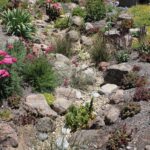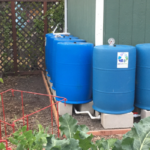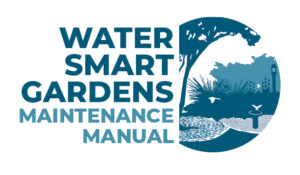Slow, Spread, and Sink Rainwater
When rain falls on pavement and rooftops it runs off and can wash pollutants into the storm drain, which flows directly to creeks and rivers. To prevent pollution, you can slow down the flow of rainwater, spread it into planters, gardens and pervious surfaces, and allow the water to sink into the ground or store it in a rain barrel or cistern for future use.
Recommended Resources:
Rainwater Harvesting

Rainwater harvesting is a way to recharge aquifers by slowing down the flow of rainwater and allowing it to sink into the earth and replenish groundwater supplies. Some methods of rainwater harvesting include channeling water into basins (rain gardens) or bioswales.
To build a rain garden in your landscape, check out this resource from the UC Master Gardener Program of Sonoma County

Daily Acts also provides resources on how to create rain gardens and install rainwater harvesting tanks.
Slow it. Spread it. Sink it. Store it!

There are many ways to slow down rainwater, spread it out over pervious surfaces, recharge groundwater and store it for future use. The Sonoma Resource Conservation District created a quick guide to show exactly how you can implement some of these strategies in your landscape.
Rainwater Harvesting Rebates

Depending on where you live in Sonoma County there may be rebates available to help offset the cost of a rainwater tank or barrel.
Rainwater System Maintenance

Rainwater tanks require annual maintenance to ensure that they are functioning properly. Check out the Water Smart Maintenance Manual, page 37 for a checklist on how to properly maintain your system.